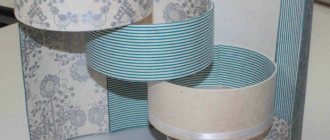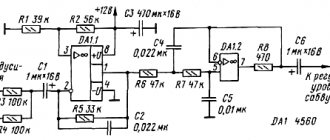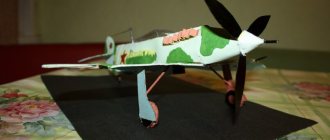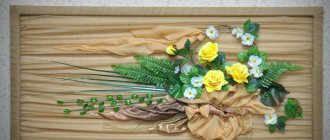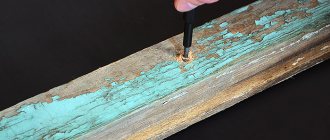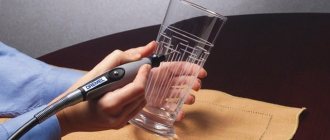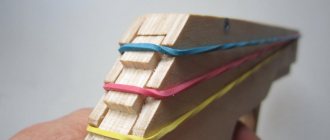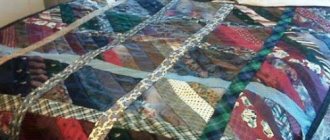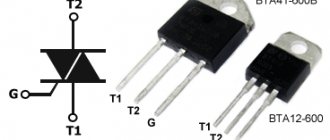The Fokin flat cutter can be called a unique device: it simultaneously performs the functions of a shovel, a rake, a hoe, and a scythe. They alone can carry out most garden work. Its main advantage and, in fact, its purpose is a blade that plunges to a depth of 2–5 cm, which can cut or pull out weeds.
You can make this tool yourself. First you need to select the material and prepare everything necessary for the work. Then, based on the drawing, make a homemade product.
We make Fokina flat cutter
Modern functional garden tools allow you to effectively carry out work on your garden plots. One of these tools is a flat cutter, which is simple and easy to use, can significantly reduce the processing time of plots and optimize garden work. This device is very functional, so summer residents mainly use it for work in their garden.
How to work with a Fokin flat cutter
It was invented by V.V. Fokin, a journalist by training and a gardener by vocation. For many years, Fokin communicated with residents of rural areas, studied various garden tools, experimented with various methods and techniques at his summer cottage, until he invented the manual one, which now bears his name. Fokin’s unique invention has become an indispensable assistant for many gardeners; it significantly reduces the load on the spine and has a beneficial effect on soil cover and productivity.
Operating principle and device
There are real flat cutters and “parodies” of the patented tool. Exactly what is called Fokin’s work must be hardened and treated against corrosion
It is important to pay attention to the cuttings
This element must be made from a rectangular block, and not from round timber. Because the device of the tool is thought out so that it works as comfortably as possible.
Round or semicircular cuttings are not intended for the Fokin flat cutter.
Therefore, when choosing the right tool, pay attention to:
- Packaging (triangular shape).
- Stamped, always unpainted steel elements.
- Bolts (necessarily included).
- Author's instructions.
For your information:
primitive tools can be adjusted even for gardeners with disabilities, as well as children
It is important to choose the blade size (by weight) and the length of the handle
Then the principle of operation will be clear. There is nothing tricky here - they use a flat cutter to weed, loosen and dig up the soil.
IMPROVING THE FOKIN FLAT CUTTER
The popular universal garden tool Fokina flat cutter is really very convenient. This tool is easy and convenient to perform many (up to 20) different operations. It can simultaneously perform the functions of a hoe, shovel, scythe and rake.
The Fokina flat cutter is designed for soil cultivation; functionally, it is a soil tool with which few other similar tools can compare.
But for those who are not satisfied with the 20 operations described in the instructions for the Fokin flat cutter, it is proposed to modify the shape of the large blade of the flat cutter.
The modification consists in making a V-shaped cut in the blade approximately 50 mm long and 12 mm wide along the short edge of the blade, followed by a special sharpening on the same side as the main sharpening. The cut is made to reliably pull out the rhizomes of perennial weeds from the soil at a depth equal to the length of the blade or more.
This is done as follows. The V-shaped cutter should be directed vertically into the ground at a distance of 2-5 cm from the weed. The handle lies horizontally in the direction of the weed stem. Next, you need to press the blade with your foot so that it goes into the soil to its full depth. Then lift the end of the handle and pull out the rhizome using the V-shaped notch.
IMPROVED FLAT CUTTER WITH YOUR HANDS
What is a flat cutter made of?
The material must be selected for the working part (metal) and the handle (wood):
- You need a strip with a width of 4–4.5 cm and a length of up to 40 cm. The material must have excellent wear resistance. It is better not to use simple iron: it will quickly become dull and bend. Either a steel angle that needs to be sawn lengthwise or a car spring 5–7 mm thick will do. The best choice is high-alloy steel, because this material is a “record holder” for durability, resistance to wear and corrosion.
- You can use pine for the handle. It is the most accessible, has a budget price, can be easily processed, but the downside is that it is short-lived, breaks quickly, and becomes covered with cracks. A good choice is birch. Its advantages are durable and affordable. The quality is higher than that of the previous species, the wood is easy to work with, but it requires longer sanding. Birch can be called the optimal choice. Ash is too expensive, although its performance qualities are excellent.
What material was used.
To make the flat cutter I used the same torsion bar sheets from the old Zaporozhets. For interested citizens, there is an address in Yekaterinburg for an enterprise (www.stenco.ru) that can send grade 65G metal.
The manufacturing process of a flat cutter.
The first stage was the tempering of the metal.
- He heated it in the flame of a blowtorch to cherry color and left it to cool in the air.
- I used a grinder to sharpen the edge of the blade for the cutting knife.
- Drilled holes for mounting to the handle. It’s a bit difficult, but at low drill speeds the process is easy.
- I drew lines with chalk where there should be bends, according to Fokin’s drawing.
- I secured the released torsion bar sheet in a vice slightly above the bend line and, heating the bend with a blowtorch, bent the sheet to the appropriate degree with an adjustable wrench. It is necessary to bend easily, without force, and it is necessary to ensure that cracks or splinters do not form. When heated, the metal becomes malleable.
- The following bends were made in a similar way.
- The most important moment comes during hardening. The burner flame from the blowtorch was directed along the blade of the flat cutter and heated to a cherry color. Don't overheat.
- Holding the edge with large carpenter's pliers, I lowered the hot blade into automobile oil for one or two seconds. I held it in the air for two or three seconds and lowered it into the oil again. Do this until the oil stops boiling on the canvas. Over-exposure will not do any good. The canvas breaks easily (tested).
How to choose?
You can often find counterfeit flat cutters on trading floors. What distinguishes them from real units is their extremely low price. Buying a low-quality flat cutter means throwing money away; such a tool will work in a matter of days (if not hours).
Real flat cutters have a guarantee, quality certificates are attached, and the service life of such a tool is at least 3 years.
The real “native” unit looks like this:
- on the box there is a logo: “Organic Product Club”;
- The set includes branded instructions with a portrait of the author;
- there are also fasteners with a special coating;
- all flat cutters are available in large and miniature formats, and they are identical in configuration;
- all tools sold by a real manufacturer are coated with a reliable anti-corrosive coating, and if the unit is counterfeit, then it is painted with enamel, which is easy to scrape off even with a fingernail.
The following signs indicate a fake:
- poor quality metal;
- the weight of the unit is small;
- the box is made of substandard material;
- label printing is cloudy;
- the instructions (if there are any) look wrinkled, the text font is blurry;
- poor fasteners that will break after a short time.
All about the Fokina flat cutter
Despite the fact that the use of a manual Fokin flat cutter involves mechanical loosening, this tool, patented in the Russian Federation, has received worldwide recognition and is very widely used. This is explained quite simply, because with the help of this elementary design you can process impressive areas, being subjected to much less physical stress, and therefore not getting so tired even after many hours of work.
Purpose of the tool
The author of the instrument was Fokin, a well-known agronomist in Russia, hence the name, however, in some sources there may be an incorrect mention of it - Frolov, which is not true. His invention can become a full-fledged replacement for such universal agricultural implements as a hoe, rake and shovel, with the difference that the flat cutter has a lighter design and application, being as gentle as possible for the soil and the crops growing in it, with the exception of weeds, for the removal of which it also applies.
Naturally, the scope of application of the flat cutter is not limited to weeding alone, and its developer gives the following directions for the potential use of his multifunctional brainchild:
- Straightening between the beds, clearly separating them from each other. To complete this task, it will be enough to simply run the flat cutter along the ground without making any serious effort.
- Loosening. The use of the design allows you to cultivate areas at a distance that fully correspond to the size of the cultivated surface.
- Virgin soil processing.
- Working with complex soils containing large amounts of clay.
- Making planting furrows for seeds. In this case, the flat cutter is not driven along the surface, but is immersed in the soil to the depth that is necessary for proper planting. In this case, both large (relevant for planting seedlings with a formed root system) and small tools used for sowing small seeds, including sprouted grains and legumes, can be used.
- Breaking up clods and uprooting thick, coarse stems of weeds. To perform these manipulations, simply turn the tool with its “heel” forward and start hitting fossils in the soil or rhizomes densely embedded in it. It is noteworthy that you can damage the root system of weeds using a blade, and in this case the plant does not have to be uprooted at all, leaving it in the ground like humus.
- Correct use of a flat cutter will allow you to safely thin out and hill up plants, even if we are talking about very young seedlings.
Among other things, the device is ideal for garden work, used for cleaning soil in close proximity to trees and cleaning utility buildings, including cowsheds, pigsties and haylofts.
Fertilizing the soil will also not take much time, because with the help of a flat cutter you can quickly and easily distribute useful substances over its surface.
Advantages and disadvantages
Like any tool for agricultural work, a flat cutter has its advantages and disadvantages. Experts strongly recommend taking these factors into account before purchasing an original device, which does not cost much, or making a Fokin flat cutter according to the drawings with your own hands. So, the undeniable advantages of this design include:
Types of flat cutters and their application
The industrial production of flat cutters, which began at the end of the last century, will satisfy any need of a summer resident or gardener. Depending on what kind of work is planned, one of six models is selected.
All work in the garden and vegetable garden can be performed by one of those proposed in the list. But then the principle of using this tool – easily and efficiently – will be violated.
A flat cutter will help, but on the condition that each model will be used for its intended purpose.
- Small flat cutter - for working on light soil, when forming furrows and small beds, for sowing vegetable seeds, weeding and fine loosening.
- Large – formation of large ridges and seeding furrows on heavy soils. Planting crops using seedling method. Loosening to a depth of more than ten centimeters. Formation of tree trunk circles, first hilling of plants in the early phases of growth.
- Small wedge – quick processing of narrow row spacing. The working part of the tool is narrow, sharply sharpened.
- A large weed is a tool with a strong, sharp blade for weeding crops that occupy large areas.
- Moguschnik – has the widest blade, convenient for hilling vegetable crops.
- Strong - a wide but short blade allows you to process heavy, rocky soils.
To process one crop, in different growth phases, it is possible to use different models. If a Small Flat Cutter is suitable for planting carrot or beet seeds, then in the future, for weeding and loosening the rows of these same crops, you will need a large or small Polotik.
An important condition is the correct use of the tool. If certain rules are not followed, working with a flat cutter will differ little from working with an ordinary hoe or hoe.
Points to consider:
- The stalk should be rectangular with rounded edges.
- The cutting should “fit” in your hand. When gripping, the fingers should “look” up. If the diameter of the handle is large, it will be difficult to work with such a tool.
- The length of the cutting is selected according to the height of the person. A short handle will force you to work while bending over, while a long handle will not allow you to hold the tool at the required angle.
- The metal part is attached to the handle at an angle of 45°. Industrial models have ready-made technical holes. This point is important to consider when making a flat cutter yourself.
- The tool must be well sharpened. It is easier to work with a sharp tool.
The main principle is the horizontal direction of movement of the tool at a given depth. In this case, both rules will be observed: work will be easy, and the quality and speed of work will be high.
Advantages and disadvantages
- replaces several tools at once;
- increases soil fertility;
- the flat handle prevents your hands from slipping, preventing the formation of calluses;
- speeds up the process of cultivating land while reducing labor costs.
The only disadvantages that can be noted are the need to adapt to the design and master the operating technique. Not everyone succeeds in this, as a result of which this unusual device turns out to be unclaimed in the arsenal of country tools.
Description
The Fokina flat cutter is a device that makes it possible to cultivate the land manually, applying a minimum amount of effort. The authorship and patent for this invention belongs to V.V. Fokin, a talented innovator who came up with an original tool that facilitates the hard work of a toiling agrarian.
The flat cutter has a positive effect on the condition of the soil and has several important functions:
There are three types of flat cutters:
- large flat cutter;
- small manual flat cutter.
In total, this tool can do about 20 different types of work.
The unit is very effective when treating a plot of weeds; it cuts off the root system of harmful plants deep in the soil (up to 6 cm).
The soil is tilled without significant damage, and weeds die. Also, noticeably less effort is spent during the production process, and productivity increases significantly.
How to make a Fokina flat cutter with your own hands
To make a Fokin flat cutter with your own hands, you must first look at its drawing. I offer you my version of the photo drawing, but you can create it yourself. Now he will move on to making the Fokin flat cutter with his own hands.
- We heat the metal with a blowtorch.
- Using a grinding machine, we sharpen the blade to fit the cutting knife.
- To secure the handle we make two holes.
- We attach the drawing to the iron and mark the places where it needs to be bent (4 bends).
- Next, we heat the marked areas with a lamp, bend them at the required angle, and cool them.
Share “Fokina’s flat cutter to help the summer resident”
How to work?
Using a flat cutter correctly is not difficult. The tool blade moves in a parallel plane. If the blade deviates at any angle, then the inclination of the handle changes. In this way, the angle of movement of the blade can be adjusted simply and efficiently. You can understand how the unit works only in test mode, there is nothing complicated about it, but you need to “feel” the behavior of the mechanism.
The blade is installed in the ground to a depth of no more than 95 cm, the tool should be located close to the working farmer.
It is recommended to do weeding when the weeds or grass have not yet grown very much, in this case less effort will have to be spent on eliminating them.
Operations can be of this type (instructions for use).
- Straightening beds. The unit moves along the ground surface without any effort.
- Loosening the soil. In this case, the soil is loosened to a distance that corresponds to the parameters of the canvas itself.
- You can process virgin soil.
- It is possible to process “heavy” soils made of clay and loam.
- Make furrows to install seeds in the soil. In this case, the tool is immersed in the soil and a planting furrow is made. To plant seedlings, a large format is usually used. To plant seeds, you can use a small tool.
- If you hit the stuck clods of soil with the “heel” of the flat cutter, they can easily be crushed. The same manipulations can be done with weeds. The curved part of the unit makes it possible to remove a rather thick stem of any plant located in the garden bed.
- The root system of the weed can be damaged if the blade of the unit is brought close to the plant during operation.
- Using a flat cutter you can hill up and thin out plants, thin out young crops (carrots, pumpkin, dill).
- You can remove the soil cover that appears next to the tree trunk, clear cowsheds of manure, crack between rows, collect hay, and evenly distribute fertilizers over the cultivated soil.
It is important to understand that you should not work with a flat cutter like a hoe or shovel. Holding the flat cutter is a little different; you can’t hit it on the ground; while working, you should take a perpendicular position relative to the ground, and not bend to the right or left.
Before starting work, you should adjust the unit to the parameters of your body. If these recommendations are not followed, the device may jam during operation when the blade is immersed in the soil.
If the tool works without difficulty, all parameters will then be set correctly. Before you begin, you should read the detailed instructions that come with the product. It is recommended to maintain correct posture while working. The back muscles should be relaxed, the torso can lean forward slightly. There should be no more than 20 centimeters of distance between the hands; the thumbs should be raised slightly while working.
It is also important to adjust the unit to suit the worker's parameters. The handle of the tool should be a couple of tens of centimeters below shoulder level; it is important to choose the correct parameters for the handle. If after 2-3 hours of work your body feels tired and achy, this indicates that the work with the flat cutter was carried out incorrectly.
Features of flat cutters of a walk-behind tractor
This device has the following operating principle:
- first, the knives carefully penetrate into the soil;
- then the walk-behind tractor begins to move, prune and thereby destroy the root systems of unwanted plants.
When this plant is already cut, it remains in the ground, rots there and subsequently becomes an excellent fertilizer for the soil.
A huge advantage of a walk-behind tractor is that when working in the ground, this device does not destroy or mix the upper crust of the earth, thus not only leaving the structure of the soil, but also improving it. Another plus is that the flat cutter prepares the ground for planting plant seeds and makes the necessary holes.
In this video we will look at a flat cutter for a walk-behind tractor:
Additional tips and tricks
During any work in the workshop, all safety measures must be observed. First of all, it is necessary to protect your eyes, especially when working with welding, regardless of its type.
In arc welding, it is not only the intensity of light resulting from the burning of the arc that is dangerous, but also the scale that appears at the site of the frozen weld. Moreover, it can break off spontaneously while the metal is cooling, flying to a great height.
Hitting hot viburnum with a hammer towards you is also a bad idea, since it can get not only into your eyes, but also into exposed skin, behind your collar, and into your hair. Therefore, they must be closed first.
When working with gas welding, heating metal with it for processing or cutting, you must use gloves and face shields - the work is carried out at high temperatures. Also, remember that oxygen creates an explosive mixture when it comes into contact with oil - a spark is not needed to detonate this mixture.
